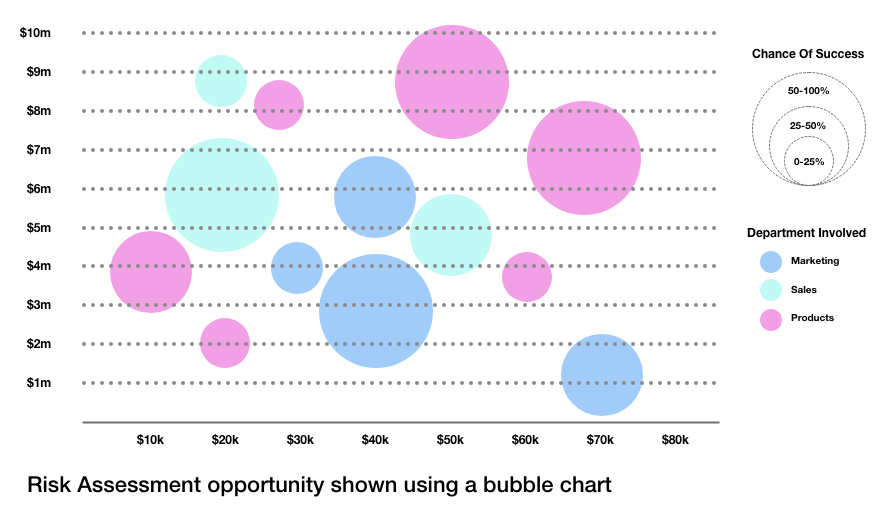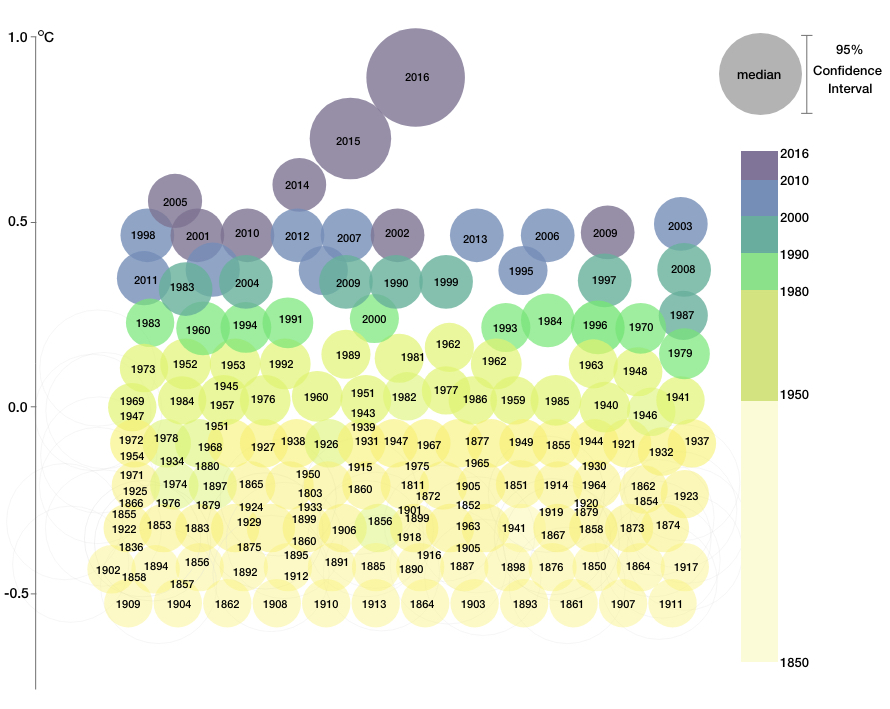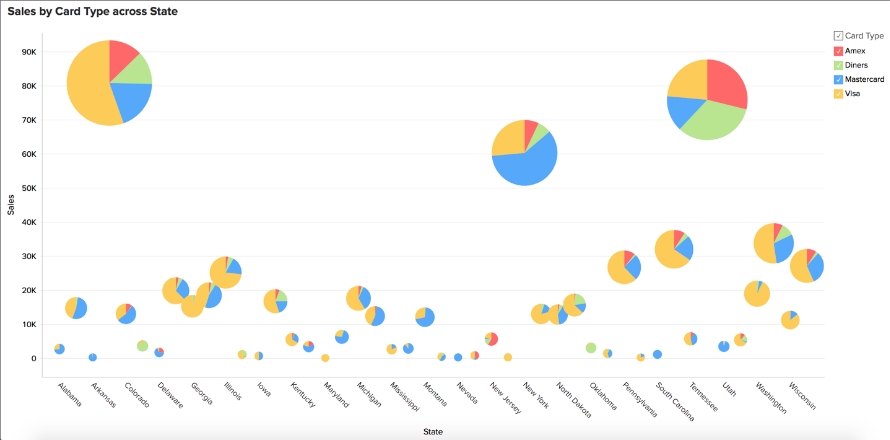A bubble chart represents data points replaced with bubbles, adding an additional dimension of the data represented through the size of the bubbles. As a variation of a scatter chart, a bubble chart similarly does not use a category axis — both horizontal and vertical axes are value axes.
[chartdesc]
History of Bubble Chart
Bubble charts were introduced by Fernanda Viegas and Martin Wattenberg as charts which represented items by labeled circles, whose areas are proportional to the displayed quantity. These charts effectively perform a visual square-root transformation and have since become a popular method of displaying data. Bubble charts are included in popular visualization toolkits such as D3 and have also been used by the New York Times Visualization Lab.
[chartimg]
When to Use a Bubble Chart?
1When you need to help users navigate complexity
Use bubble charts to effectively display three fields of data using the position and proportion of the bubbles plotted. This can help in analyzing data sets with multiple inputs, visualizing patterns, and finding trends using data analysis. As a detailed bubble chart with multiple data inputs conveys a lot of information at once it can help users navigate complexity with a clear introduction to the data and intent.

2When required to compare and show the relationships between categories
Use a bubble chart when required to present four dimensions of data to show relationships by the use of positioning and proportions. In such a scenario the color temperature of the data bubble serves as the fourth dimension used to differentiate data points. The size of the bubble is also critical to a user interpreting the data efficiently and accurately — particularly when the range of data is spread out over a specific axis. When using the total area (instead of radius or diameter) of individual bubble plots to convey meaning, it is important to clearly document the scale.

3When you need to combine the functionality of both pie charts and line charts for showing composition and correlation together
Use a bubble chart for analyzing finance scenarios beyond standard time-series or whole-to-whole comparisons using line and bar charts. It can effectively combine these different functionalities coherently through one visual chart giving an overall picture.

Types of Bubble Charts
1. Labeled bubble charts
Each individual bubble is labeled useful when there is a relatively small number of data points.
2. 3D Bubble charts
3-D Bubble chart shows the data in 3-D format without using a depth axis
3. Cartograms
Bubbles drawn on top of maps are known as cartograms. From a conceptual perspective, the horizontal and vertical positions are represented as latitudes and longitudes, using an image in the background.
When Not to Use Bubble Charts?
1When you do not have at least three dimensions of data
The idea of using colorful bubbles to display data can be tempting because line and bar charts are ubiquitous and lack the unique visual appeal that colorful discs provide. However, if you do not have at least three dimensions of data, consider using a different chart for data visualization. Data visualizations like the bubble charts benefit from carefully thought out design.
2When you have a comprehensive overlap in data
If the two or more data points have similar X & Y values, the bubbles may overlap or one may be hidden behind another. It reduces the understandability of the chart reducing the ease of its readability, so Bubble Charts have a limited data size capacity. This can be remedied by introducing interactivity: adding clicking or hovering functionality over bubbles to display hidden information along with having an option to reorganize or filter out grouped categories.